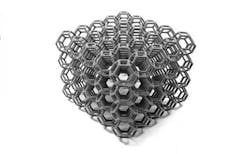Softest Powder for SLS Printing
Additive manufacturing is typically identified with producing hard and stiff objects. Across different techniques, selective laser sintering (SLS) is mostly known for detailed and high surface quality prints made from PA (polyamides). But what if there was a material so soft and mellow that 3D printing industry experts will not believe it was used in an SLS 3D printer?
Flexa Soft, a material from the TPU (thermoplastic polyurethanes) group, has exceptional softness, between 40 - 55 in Shore A type scale. The range of application is extensive. From fashion to medicine - when you need to simulate soft material, Flexa Soft seems to be perfect.
In the last few years, based on medical imaging, 3D printing is getting the well-deserved attention of medical researchers, academics and practitioners. For some surgeons, it became the routine to use 3D printed models before the operation. It is easier to exercise the procedure: choose the right surgical tools, plan their path or even perform a trial surgery. When you 3D print an organ from a hard material, it is difficult to cut it with a scalpel. But with Flexa Soft it is much easier.
In the opinion of several medics, this material perfectly imitates the hardness of some tissues. Models made from this powder are excellent to touch and can easily take the desired shape under load or pressure, retaining its geometry when unloaded.
For the fashion industry, it is a game-changing product. Until now, Sinterit was answering the needs of fashion designers with another material called Flexa Black. Now the possibilities are broader, as Flexa Soft can easily adjust to the wearer’s body. And it is not even close to the finish line.
With enhanced elasticity, it is also a great choice to use it for prototyping gaskets or sensory toys. The best way to find out more applications of Flexa Soft is to try it on Lisa or Lisa Pro.
